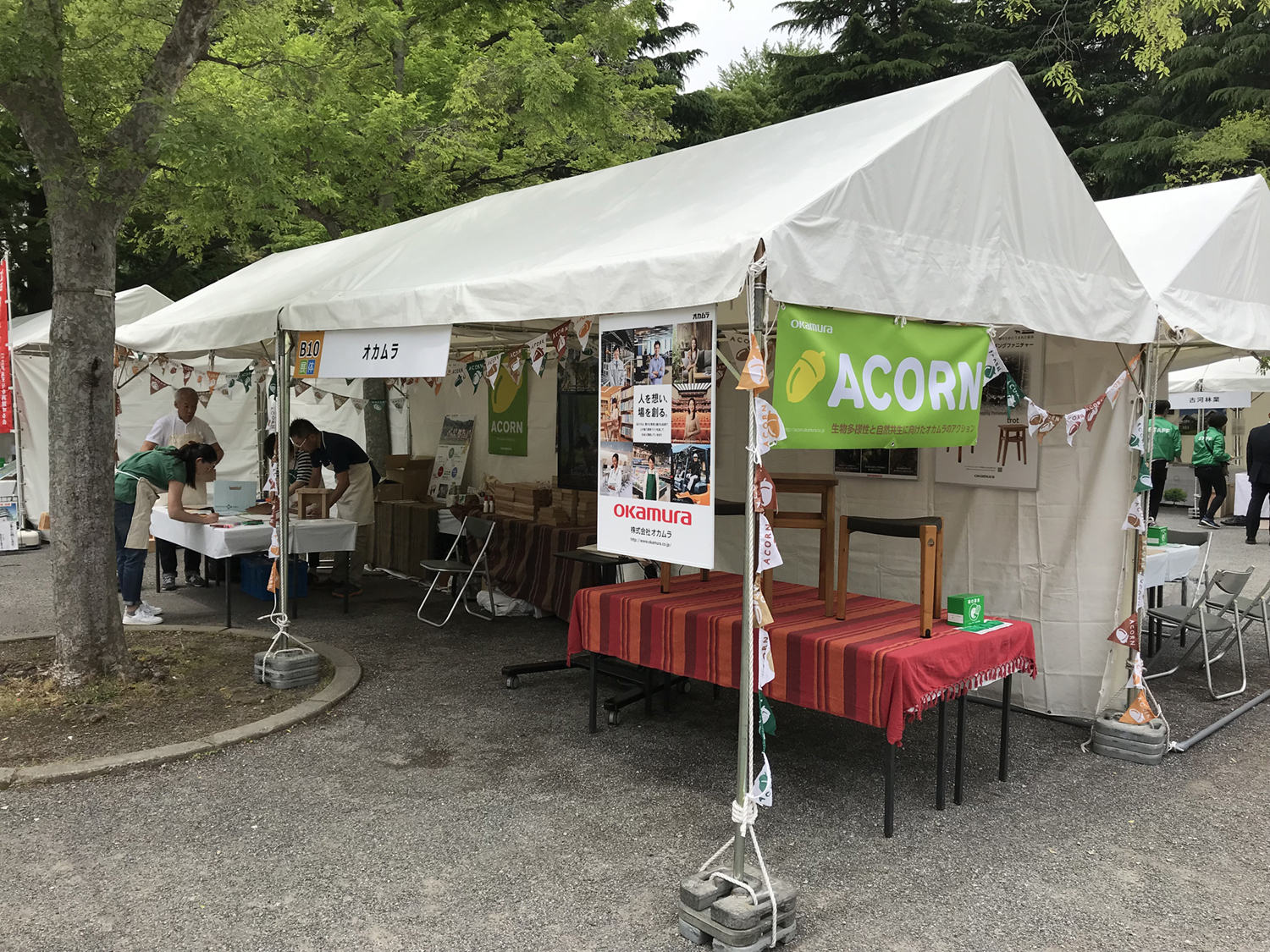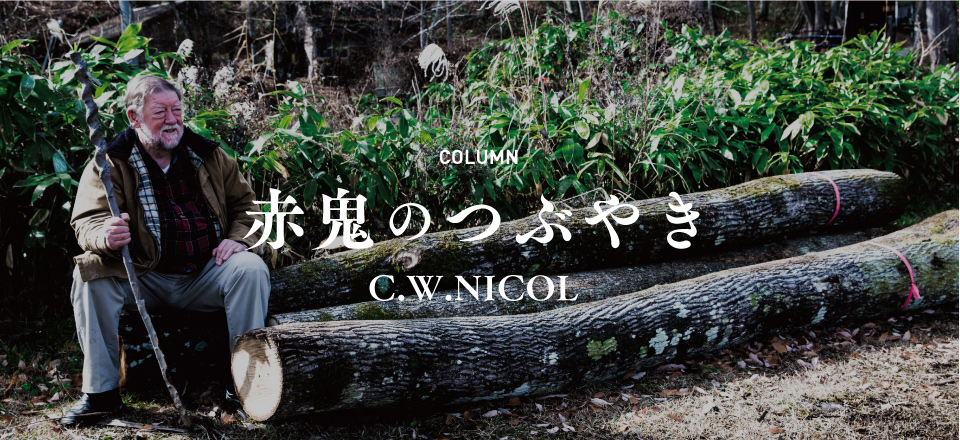Column
【赤鬼のつぶやき C.W.ニコル】ハリギリ(castor aralia / tree aralia 学名:Kalopanax septemlobus)
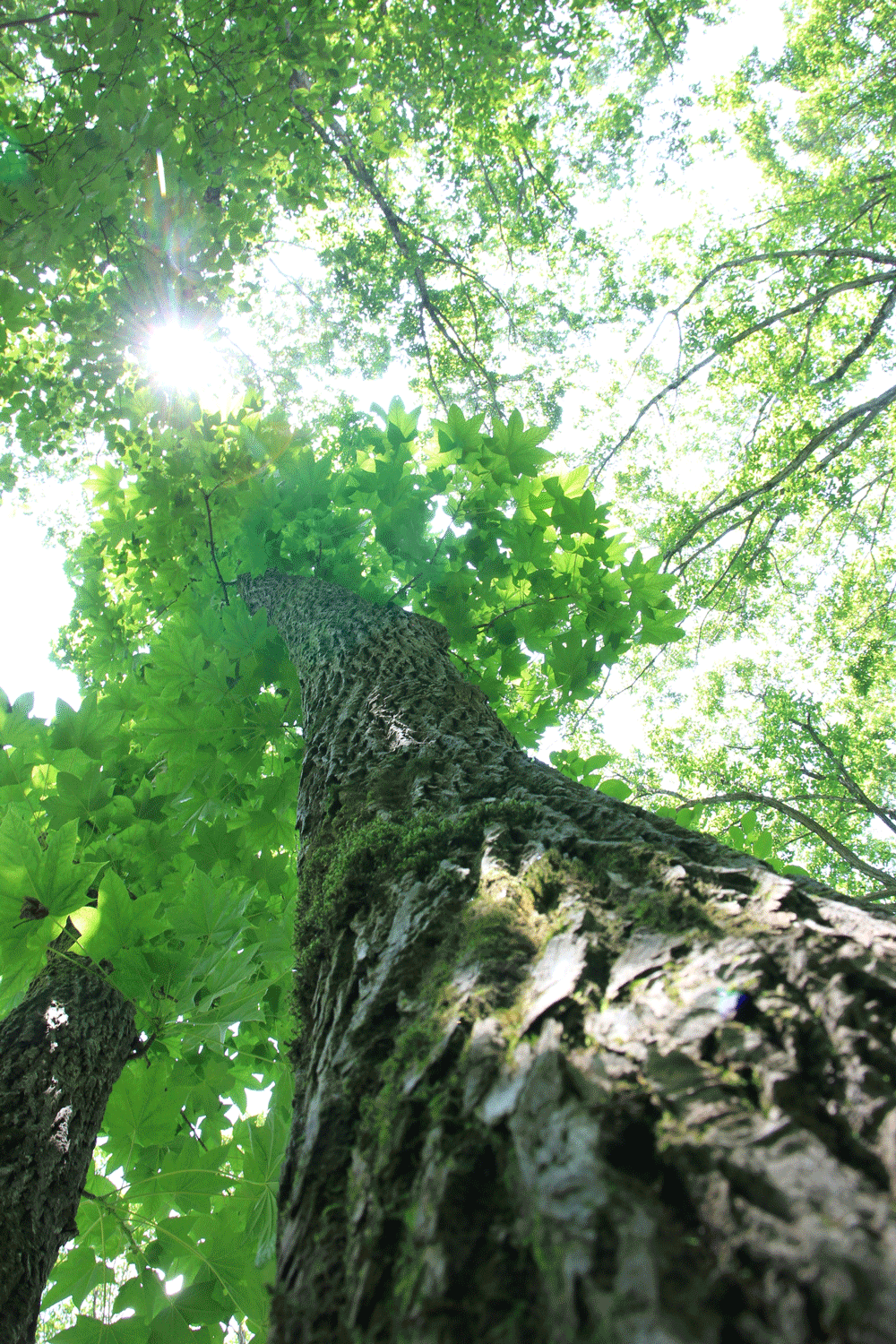
ハリギリはアファンの森にあるものの、知りませんでした。大きな個体ではなかったからです。若いうちはひょろりとして棘があり、5から9枚の裂葉が掌状の葉になっていて、茎の部分も棘だらけです。これが30メートルにはなる木だと教えてくれたのは福地健太郎で、数年前、エチオピアへの里帰り旅行にも一緒に来てくれたことがあるベテランアファンの森財団スタッフです。インターネットや数冊の本の中でしか見たことがない大きく育ったハリギリの木を、いつか見てみたいというのが野望の一つです。
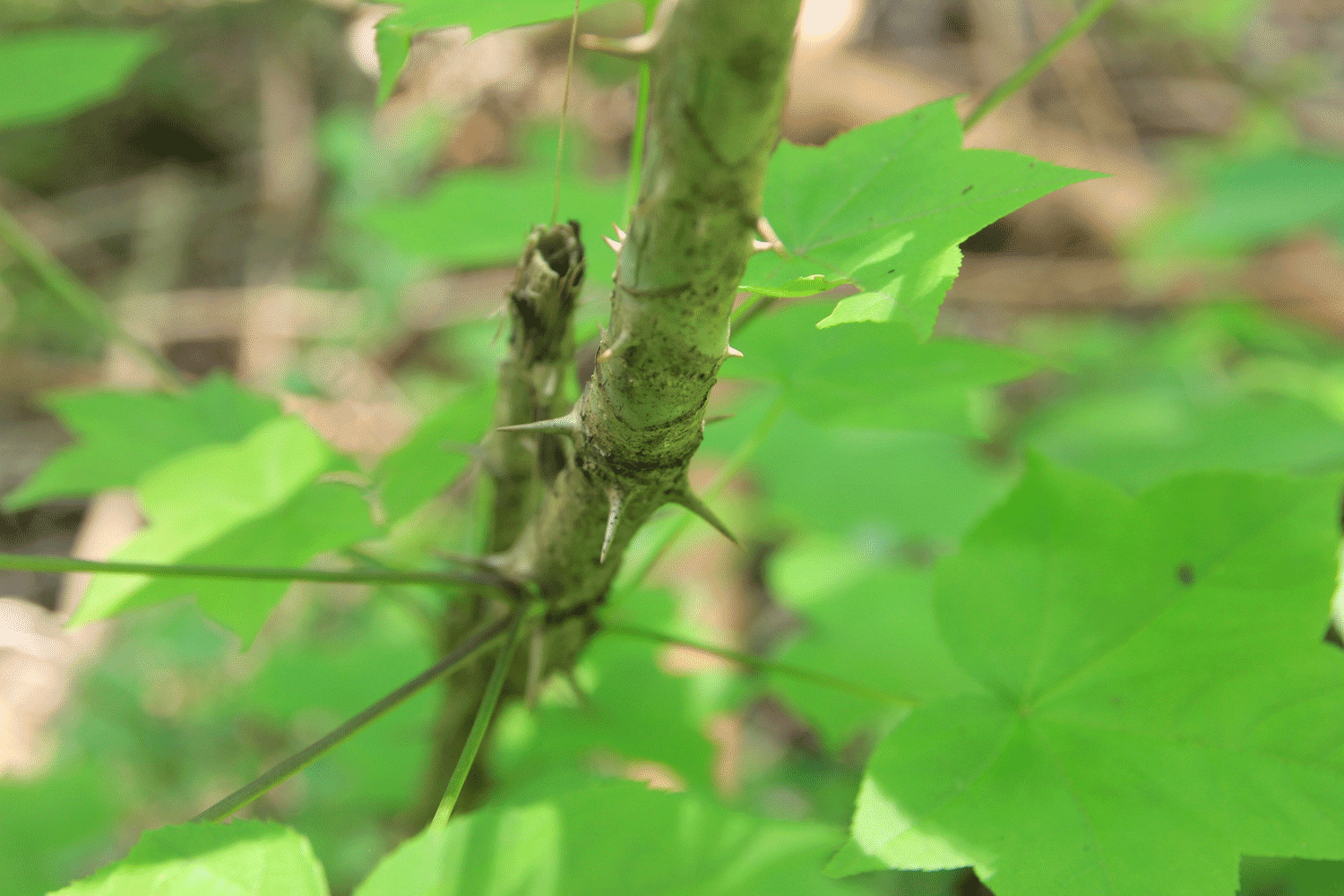
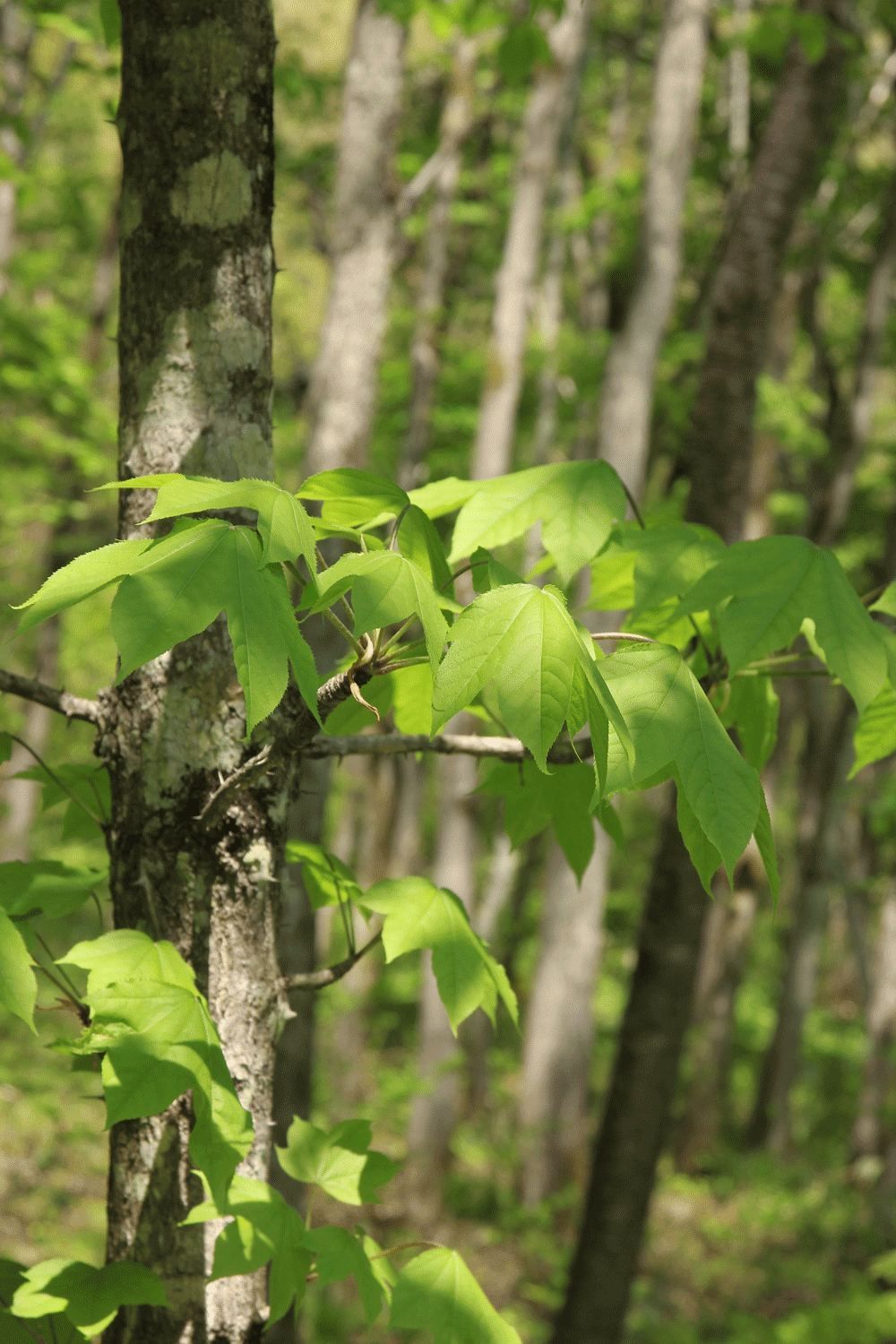
「ハリギリ」は、英語では「castor aralia」か「tree aralia」と呼ばれており、北はサハリンから、日本と韓国、中国の南西部あたりまで分布しています。成長した木は金色のような黄色い木材になります。軽くて、きめが細かく、家具や楽器、下駄や、化粧張り用の薄い板に加工されています。ゆっくりと成長して、寒さにもよく耐えます。
韓国では、若い葉と芽は、熱湯の中で薄皮を剥いて調理されています。日本でもおそらく食用になっていると思いますが、1980年から長野に暮らしている山菜を愛するわたしでも、まだ食べたことがありません。中国や韓国では、この幹を煎じて色々な病気の治療に使っているということも読んだことがあります。
小さくて黒い実が房になって付きます。秋になると、真っ黄色になる葉は、まるでとても大きなカエデの葉のようになりす。木陰を作り彩りを添える木として、外国では好んで植えられています。

上にも書いたように、いつか大きなハリギリを見に行きたいと思っています。若くて棘だらけの木も忘れがたい姿でしたが、本当に大きなハリギリの木、もしくはハリギリで作ったものを、見逃さないように注意しておきたいと思います。
C.W.ニコル
2018年6月
写真提供:C.W.ニコル・アファンの森財団
HARIGIRI –Kalopanax septemlobus
This is a tree that grows in our Afan woods, but because we don’t have any big ones, I didn’t know it.
As a young tree it has a rather spindly and very spiny, prickly stem, with large palmate leaves with five to nine lobes. Fukuchi Kentaro, one of our veteran staff (who accompanied on my return trip to Ethiopia a few years ago) told me that this was a tree that could achieve a height of 30 metres.It is now one of my ambitions to see a big, mature tree, and I used the Internet and a few books to study.
The ‘harigiri’ tree, also known in English as ‘castor aralia’ or ‘tree aralia’ grows wild from Sakhalin in the north, down through Japan and Korea to southwest China.
Mature trees produce a golden-yellow wood that is light, finely grained, and used for making furniture, musical instruments, geta and veneer. It grows very slowly, and tolerates cold.
Young leaves and shoots are blanched in scalding water and used as food in Korea. It is probably eaten in Japan too, but even though I have lived in northern Nagano since 1980 and love ‘sansai’ I have never tried it here. I read also that the bark was used in infusions as a cure for various illnesses in Korea and China.
Harigiri produces clusters of small black berries.
In autumn, the harigiri leaves, which are a bit like really big maple leaves, turn a pure yellow.The tree is favoured abroad as an ornamental shade tree.
As I said, in the future I’ll look out for it. Now I’ll never forget what the young and spindly tree looks like so I’ll be alert to seeing a really big tree, or otherwise something that has been made with harigiri wood.
C.W.Nicol
June 2018
C.W.ニコル
作家・1940年イギリス南ウェールズ生まれ。1995年日本国籍取得。カナダ水産調査局北極生物研究所の技官・環境局の環境問題緊急対策官やエチオピアのシミエン山岳国立公園の公園長など世界各地で環境保護活動を行い、1980年から長野県在住。1984年から荒れ果てた里山を購入し「アファンの森」と名づけ、森の再生活動を始める。2005年、その活動が認められエリザベス女王から名誉大英勲章を賜る。2011年、2016年に天皇、皇后両陛下がアファンの森をご視察された。


